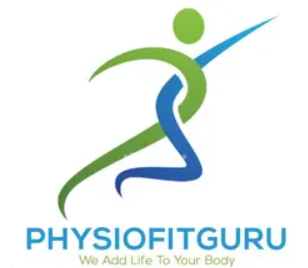Diabetic ulcers are not only painful, but can be a major burden to mobility and quality of life. As it is known to many patients, a small injury on the foot may turn into an incurable wound. The good news? Having the appropriate treatment of diabetic ulcer, painless treatment methods, laser treatment on ulcers and professional diabetic wound treatment, you can speed up the healing process, avoid complications and restore faith in your everyday steps.
This reference will elaborate on the causes, treatment and the current method of treating diabetic ulcers.
What Are Diabetic Ulcers?
A diabetic wound is a persistent wound that develops due to the incapacity to supply blood to the nerves and blood due to the high level of sugar in the blood. Although ulcers mostly occur on the feet, they may occur anywhere the skin is likely to be exposed to pressure or damage.
Causes and Risk Factors:
- Peripheral neuropathy: Loss of sensation may result in injuries that are undetected.
- Lack of blood flow: The healing process is slowed down and there is a threat of infection.
- Increased blood sugar level: Lowers the immune system and affects the repair of tissues.
- Foot deformities or pressure points: Factor and raise the chances of recurrent friction injuries.
- Infections: Minor infections may get worse and turn out to be chronic.
Non-healing ulcers can be prevented with early intervention and preventive care.
The Significance of Wound Diabetic Care
Care management of diabetic wounds is not simply about cleaning of the wound, but a proactive solution to prevent infection, enhance healing and complications.
Key Practices:
- Daily Foot Checks: Find out cuts, blisters, redness, and swelling.
- Hygiene: Feet should always be clean and dry to avoid growth of bacteria.
- Moisturizing: Cracks and dryness cause ulcers, which are prevented.
- Protective Shoes: alleviates pressure and eliminates injury.
- Blood Sugar: Glucose level should be constantly monitored because it speeds up healing.
Regular diabetic wound care can significantly enhance the outcomes and decrease the necessity to fight diabetic ulcer through the use of aggressive therapy.
Diabetic Ulcer Treatment: Current Treatment
The conventional treatment methods involved cleaning, changing dressings, and antibiotics. In this day and age, there are more sophisticated solutions that provide more painless and safer treatments of diabetic ulcers.
Common Treatments:
- Debridement: Dead tissue is removed to enhance healing.
- Topical Agents: Antibiotic ointments, growth factors or special dressings.
- Offloading Devices: Special casts or shoes to offload the wound.
- Hyperbaric Oxygen Therapy: Oxygen delivery and healing.
- Ulcer Laser Therapy: This is non-invasive which boosts circulation and heals more quickly.
To a large extent, a combination of such treatments is the most effective method, particularly with non-healing ulcers. Also visit Diabetic ulcer treatment.
Diabetic Foot Ulcer Therapy
The treatment of diabetic foot ulcers targets the foot wounds that represent the prevalent diabetic ulcers. Therapy which is effective is a way of not just accelerating the healing process but also preventing infection and complications.
Therapy Goals:
- Alleviate pain and avoid infection
- Promote faster healing
- Restore mobility
- Prevent recurrence
Common Methods:
- Debridement and Cleaning: This is necessary in the removal of dead tissue and bacteria.
- High Technology dressing: Foam dressing, hydrocolloid dressing, silver based dressing cover the wound and heal the wound.
- Offloading and Pressure Relief: Special shoes or equipment decrease the pressure of the ulcer.
- Ulcer Laser Therapy: Stimulates the process of cell regeneration and enhances circulation.
- Patient Education: Patient education on foot care and preventive measures to prevent future ulcers.
Customized diabetic foot ulcer therapy can guarantee optimal results to the patients.
Ulcer Laser Therapy: A Miracle
Ulcer laser therapy is a non-invasive innovative treatment that improves painless treatment of diabetic ulcers. It involves low-level laser light that is utilized to stimulate tissue healing and reduce inflammation and boost blood circulation in the target region.
Benefits:
- Pain-free and minimal invasion.
- Accelerates the healing process.
- Minimizes the chances of infection.
- Can be used in combination with conventional wound care with better outcomes.
This treatment is particularly useful in non-healing stubborn ulcers and offers quicker way to healing.
Diabetic ulcers treatment without pain
Suffering is one of the greatest obstacles to regular wound treatment. The new therapies have focused on nondestructive treatment of diabetic ulcers in order to make the recovery process easier to the patients.
Pain-Reducing Methods:
- Low-Level Laser Therapy: Activates the process of healing without causing pain.
- Topical Anesthetics: Anaesthetic dressing changes.
- Advanced Dressings: Reduce friction and irritation.
- Offloading Devices: Pressure reduction but not painful.
Pain management is a strategy to promote compliance with care practices and enhance patient recovery.
Non-Healing Ulcer Treatment
There are those ulcers which are not responding to the traditional therapy and are labeled as non-healing ulcers. These recalcitrant wounds need specific measures to handle.
Causes of Non-Healing Ulcers:
- Poor blood flow
- Persistent high blood sugar
- Infection or biofilm development.
- Reocurrence of trauma of wound area.
Advanced Treatment Options:
- Specialized Dressings: Silver, hydrocolloid or bioengineered skin substitutes.
- Ulcer Laser Therapy: Increases tissue repair and blood circulation.
- Hyperbaric Oxygen Therapy: Improves the oxygen application to the wound.
- Surgical Intervention: Surgical procedures are done only when the non-invasive procedures are not successful.
- Routine Check-ups: Makes sure that complications are identified early enough.
Individualized treatment regimen enhances the chances of healing the non-healing cases of ulcer treatment.
Also read : Non-healing ulcer treatment.
Preventing Diabetic Ulcers
The most effective approach is prevention. Ulcer can be prevented by appropriate wound care in diabetics and lifestyle change.
Preventive Tips:
- Foot inspections of the cuts or blisters per day.
- Maintain normal level of blood sugar.
- Use protective and comfortable shoes.
- Avoid walking barefoot
- Treat minor wounds promptly
The preventive measures would help patients reduce the intensive treatment of diabetic ulcers.
Diabetic ulcers are severe complication and modern therapies result in a quicker and less painful healing process. Through proper diabetic wound care, diabetic foot ulcer treatment, ulcer laser treatment, and emphasis on painless treatment of diabetic ulcers, patients will be able to avoid complications, recover their mobility, and increase their quality of life.
The important ones are early intervention and regular care. In case you have a diabetic ulcer or a loved one, it is necessary to consult a specialist and develop an individual treatment plan. Through patience, one can recover and it is possible to prevent future ulcers.

